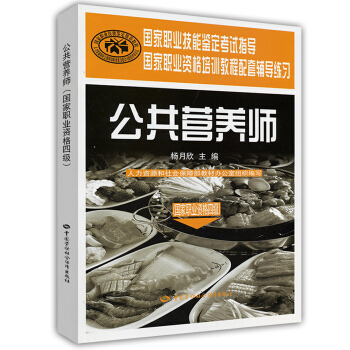

具体描述
内容简介
本书对所有主要的机器学习方法和新研究趋势进行了深入探索,涵盖概率和确定性方法以及贝叶斯推断方法。其中,经典方法包括平均/小二乘滤波、卡尔曼滤波、随机逼近和在线学习、贝叶斯分类、决策树、逻辑回归和提升方法等,新趋势包括稀疏、凸分析与优化、在线分布式算法、RKH空间学习、贝叶斯推断、图模型与隐马尔可夫模型、粒子滤波、深度学习、字典学习和潜变量建模等。全书构建了一套明晰的机器学习知识体系,各章内容相对独立,物理推理、数学建模和算法实现精准且细致,并辅以应用实例和习题。本书适合该领域的科研人员和工程师阅读,也适合学习模式识别、统计/自适应信号处理和深度学习等课程的学生参考。
作者简介
SergiosTheodoridis希腊雅典大学信息系教授。主要研究方向是自适应信号处理、通信与模式识别。他是欧洲并行结构及语言协会(PARLE-95)的主席和欧洲信号处理协会(EUSIPCO-98)的常务主席、《信号处理》杂志编委。
KonstantinosKoutroumbas1995年在希腊雅典大学获得博士学位。自2001年起任职于希腊雅典国家天文台空间应用研究院,是国际知名的专家。
目录
Contents
Preface.iv
Acknowledgments.vv
Notation.vfivi
CHAPTER 1 Introduction .1
1.1 What Machine Learning is About1
1.1.1 Classification.2
1.1.2 Regression3
1.2 Structure and a Road Map of the Book5
References8
CHAPTER 2 Probability and Stochastic Processes 9
2.1 Introduction.10
2.2 Probability and Random Variables.10
2.2.1Probability11
2.2.2Discrete Random Variables12
2.2.3Continuous Random Variables14
2.2.4Meanand Variance15
2.2.5Transformation of Random Variables.17
2.3 Examples of Distributions18
2.3.1Discrete Variables18
2.3.2Continuous Variables20
2.4 Stochastic Processes29
2.4.1First and Second Order Statistics.30
2.4.2Stationarity and Ergodicity30
2.4.3PowerSpectral Density33
2.4.4Autoregressive Models38
2.5 InformationTheory.41
2.5.1Discrete Random Variables42
2.5.2Continuous Random Variables45
2.6 Stochastic Convergence48
Problems49
References51
CHAPTER 3 Learning in Parametric Modeling: Basic Concepts and Directions 53
3.1 Introduction.53
3.2 Parameter Estimation: The Deterministic Point of View.54
3.3 Linear Regression.57
3.4 Classification60
3.5 Biased Versus Unbiased Estimation.64
3.5.1 Biased or Unbiased Estimation?65
3.6 The Cramér-Rao Lower Bound67
3.7 Suf?cient Statistic.70
3.8 Regularization.72
3.9 The Bias-Variance Dilemma.77
3.9.1 Mean-Square Error Estimation77
3.9.2 Bias-Variance Tradeoff78
3.10 MaximumLikelihoodMethod.82
3.10.1 Linear Regression: The Nonwhite Gaussian Noise Case84
3.11 Bayesian Inference84
3.11.1 The Maximum a Posteriori Probability Estimation Method.88
3.12 Curse of Dimensionality89
3.13 Validation.91
3.14 Expected and Empirical Loss Functions.93
3.15 Nonparametric Modeling and Estimation.95
Problems.97
References102
CHAPTER4 Mean-quare Error Linear Estimation105
4.1Introduction.105
4.2Mean-Square Error Linear Estimation: The Normal Equations106
4.2.1The Cost Function Surface107
4.3A Geometric Viewpoint: Orthogonality Condition109
4.4Extensionto Complex-Valued Variables111
4.4.1Widely Linear Complex-Valued Estimation113
4.4.2Optimizing with Respect to Complex-Valued Variables: Wirtinger Calculus116
4.5Linear Filtering.118
4.6MSE Linear Filtering: A Frequency Domain Point of View120
4.7Some Typical Applications.124
4.7.1Interference Cancellation124
4.7.2System Identification125
4.7.3Deconvolution: Channel Equalization126
4.8Algorithmic Aspects: The Levinson and the Lattice-Ladder Algorithms132
4.8.1The Lattice-Ladder Scheme.137
4.9Mean-Square Error Estimation of Linear Models.140
4.9.1The Gauss-Markov Theorem143
4.9.2Constrained Linear Estimation:The Beamforming Case145
4.10Time-Varying Statistics: Kalman Filtering148
Problems.154
References158
CHAPTER 5 Stochastic Gradient Descent: The LMS Algorithm and its Family .161
5.1 Introduction.162
5.2 The Steepest Descent Method163
5.3 Application to the Mean-Square Error Cost Function167
5.3.1 The Complex-Valued Case175
5.4 Stochastic Approximation177
5.5 The Least-Mean-Squares Adaptive Algorithm179
5.5.1 Convergence and Steady-State Performanceof the LMS in Stationary Environments.181
5.5.2 Cumulative Loss Bounds186
5.6 The Affine Projection Algorithm.188
5.6.1 The Normalized LMS.193
5.7 The Complex-Valued Case.194
5.8 Relatives of the LMS.196
5.9 Simulation Examples.199
5.10 Adaptive Decision Feedback Equalization202
5.11 The Linearly Constrained LMS204
5.12 Tracking Performance of the LMS in Nonstationary Environments.206
5.13 Distributed Learning:The Distributed LMS208
5.13.1Cooperation Strategies.209
5.13.2The Diffusion LMS211
5.13.3 Convergence and Steady-State Performance: Some Highlights218
5.13.4 Consensus-Based Distributed Schemes.220
5.14 A Case Study:Target Localization222
5.15 Some Concluding Remarks: Consensus Matrix.223
Problems.224
References227
CHAPTER 6 The Least-Squares Family 233
6.1 Introduction.234
6.2 Least-Squares Linear Regression: A Geometric Perspective.234
6.3 Statistical Properties of the LS Estimator236
6.4
前言/序言
PrefaceMachine Learning is a name that is gaining popularity as an umbrella for methods that have been studied and developed for many decades in different scientific communities and underdiffer entnames,such as Statistical Learning,Statistical Signal Processing, Pattern Recognition,Adaptive Signal Processing,Image Processing and Analysis,System Identification and Control,Data Mining and Information Retrieval,Computer Vision,and Computational Learning.The name“Machine Learning”indicates what all these disciplines have in common,that is,to learn from data,and thenmake predictions.What one tries to learn from data is their underlying structure an dregularities, via the development of a model,which can then be used to provide predictions.To this end,anumber of diverse approaches have been developed,ranging from optimization of cost functions,whose goal is to optimize the deviation between what one observes from data and what them odelpredicts,to probabilistic models that attempt to model the statistical properties of the observed data.The goal of this book is to approach the machine learning discipline in a unifying context, by presenting the major paths and approaches that have been followed over the years, without giving preference to a specific one. It is the author’s belief that all of them are valuable to the newcomer who wants to learn the secrets of this topic, from the applications as well as from the pedagogic point of view.As the title of the book indicates,the emphasis is on the processing and analysis front of machine learning and not on topics concerning the theory of learning itself and related performance bounds.In other words,the focusis on methods and algorithms closer to the application level.The book is the outgrowth of more than three decades of the author’s experience on research and teaching various related courses.The book is written in such a way that individual(orpairsof)chapters are as self-contained as possible. So,one can select and combine chapters according to the focus he/she wants to give to the course he/she teaches,or to the topics he/she wants to grasp in a first reading.Some guidelines on how one can use the book for different courses are provided in the introductory chapter.Each chapter grows by starting from the basics and evolving to embrace the more recent advances. Some of the topics had to be split into two chapters,such as sparsity-aware learning, Bayesian learning,probabilistic graphical models, and Monte Carlo methods.The book addresses the needs of advanced graduate, postgraduate,and research students as well as of practicing scientists and engineers whose interests lie beyond black-box solutions. Also,the book can serve the needs of short courses on specific topics,e.g.,sparse modeling, Bayesian learning, robabilistic graphical models,neural networks and deep learning.Most of the chapters include Matlab exercises,and the related code is available from the book’s website. The solutions manual as well as PowerPointlectures are also available from the book’s website.AcknowledgmentsWritingabookisaneffortontopofeverythingelsethatmustkeeprunninginparallel.Thus,writingisbasicallyanearlymorning,afterfive,andovertheweekendsandholidaysactivity.Itisabigeffortthatrequiresdedicationandpersistence.Thiswouldnotbepossiblewithoutthesupportofanumberofpeople—peoplewhohelpedinthesimulations,inthemakingofthefigures,inreadingchapters,andindiscussingvariousissuesconcerningallaspects,fromproofstothestructureandthelayoutofthebook.First,Iwouldliketoexpressmygratitudetomymentor,friend,andcolleagueNicholasKalouptsidis,forthislong-lastingandfruitfulcollaboration.ThecooperationwithKostasSlavakisoverthelastsixyearshasbeenamajorsourceofinspirationandlearningandhasplayedadecisiveroleformeinwritingthisbook.Iamindebtedtothemembersofmygroup,andinparticulartoYannisKopsinis,PantelisBouboulis,SimosChouvardas,KostasThemelis,GeorgePapageorgiou,andCharisGeorgiou.Theywerebesidemethewholetime,especiallyduringthedifficult
用户评价
这本书的出现,对我而言,是理论探索与实践应用的一次绝佳邂逅。我长期以来一直对贝叶斯方法在处理不确定性和信息整合方面的精妙之处深感着迷。它提供了一种将先验知识与观测数据相结合,从而做出更鲁棒、更可靠决策的强大框架。无论是用于概率建模、统计推断,还是在贝叶斯神经网络等前沿领域,贝叶斯思想都扮演着核心角色。与此同时,优化方法则是机器学习模型的“发动机”,驱动着模型从杂乱无章的数据中学习规律。从基础的梯度下降及其各种变体,到更复杂的二阶优化、约束优化,再到用于处理非凸问题的全局优化技术,它们都致力于在复杂的函数空间中找到最优解。我迫切希望这本书能够深入阐述如何将这两大核心技术融会贯通。例如,如何利用各种优化算法来解决复杂的贝叶斯模型推断问题?如何处理因模型复杂度过高而导致的计算瓶颈?书中是否会提供一些在实际应用场景中非常重要的优化技巧,比如如何在训练过程中处理梯度爆炸或消失,如何进行模型正则化以提高泛化能力,或者如何设计有效的学习率调度策略?
评分这本书的出现,对我来说就像在茫茫学海中看到了一座灯塔。我一直对机器学习中的贝叶斯方法情有独钟,因为我深信概率思维和对不确定性的拥抱是理解和构建智能系统的关键。贝叶斯模型,从简单的贝叶斯分类器到复杂的概率图模型,都提供了一种优雅的方式来描述数据生成过程,并能有效地融入先验知识,这在处理信息稀疏、噪声干扰或需要量化预测不确定性的问题时,优势尤为明显。另一方面,优化方法则是机器学习模型的“心脏”,驱动着模型的学习和性能提升。无论是梯度下降的各种变体,还是更复杂的全局优化技术,它们都致力于在复杂的损失函数空间中寻找最优解。我特别希望这本书能够详细阐述如何将贝叶斯模型的推断过程与高效的优化算法相结合,例如,如何利用变分推断(Variational Inference)和期望最大化(EM)算法来近似计算复杂的后验分布,以及如何利用各种采样方法(如MCMC)来探索模型空间。我也好奇书中是否会涉及一些关于鲁棒优化和公平性优化的内容,因为在实际应用中,模型的稳定性和公平性与最优性同等重要。
评分作为一名长期在机器学习领域摸索的从业者,我深切体会到理论与实践之间的鸿沟。一本好的教材,不仅要能提供扎实的理论基础,更要能够引导读者将理论应用于实际问题。这本书的标题“机器学习:贝叶斯和优化方法”让我看到了这种可能性。贝叶斯方法以其处理不确定性和融入先验知识的能力,在许多领域都大放异彩,例如在金融风险评估、医疗诊断、科学实验设计等方面。而优化方法,则是将理论模型转化为可执行算法的关键。我希望这本书能详细阐述如何将贝叶斯模型与各种优化算法有机地结合起来,例如,在贝叶斯神经网络的训练过程中,如何有效地利用随机梯度下降及其变种来优化后验分布?如何处理贝叶斯非参数模型(如高斯过程)的计算复杂度问题,并通过高效的优化技术来加速其推理和学习过程?我特别关注书中是否会涉及一些关于贝叶斯推断的近似方法,例如马尔可夫链蒙特卡洛(MCMC)方法及其在优化中的应用,以及变分推断(Variational Inference)等技术,这些方法在处理复杂的贝叶斯模型时至关重要。此外,我也希望书中能够提供一些具体的代码示例或伪代码,帮助读者更好地理解和实现书中的算法,并能指导我们如何根据实际问题的特点选择合适的贝叶斯模型和优化策略。
评分我一直认为,理解机器学习的本质离不开对概率论和优化理论的深刻把握。这本书的标题——《机器学习:贝叶斯和优化方法》——正是抓住了这两个核心要素。贝叶斯方法,以其对不确定性的建模能力和对先验信息的融合能力,在处理诸如自然语言理解、计算机视觉、推荐系统等复杂任务时,展现出强大的优势。它提供了一种从数据中学习概率模型,并进行可靠推断的框架。而优化方法,则是支撑起机器学习模型训练和性能优化的技术支柱。从经典的梯度下降到各种自适应学习率算法,再到更高级的二阶优化和全局优化技术,其发展速度和应用范围都令人惊叹。我特别希望这本书能够深入探讨如何将贝叶斯推断与高效的优化算法巧妙结合。例如,如何在贝叶斯深度学习模型中,利用变分推断(Variational Inference)或期望最大化(EM)算法来近似计算复杂的后验分布?如何有效地处理大规模数据集下的贝叶斯模型优化问题?书中是否会涉及一些在实际应用中至关重要的优化策略,比如正则化、批量归一化,以及如何根据问题的特点选择合适的优化器和优化策略?
评分我一直坚信,机器学习的核心在于理解数据背后的概率分布,以及如何高效地从中学习。这本书的标题,特别是“贝叶斯”和“优化方法”,正是我一直以来所追求的。贝叶斯方法,以其对不确定性的精确量化和对先验知识的灵活运用,为我们提供了一种思考和建模问题的独特视角。从简单的先验信念,到复杂的概率图模型,贝叶斯方法在诸如自然语言处理、计算机视觉、推荐系统等领域都展现出了巨大的潜力。而优化方法,则是将这些复杂的概率模型转化为实际可执行的算法的关键。我希望书中能够深入剖析不同类型的优化算法,例如,从基础的梯度下降,到更高级的二阶方法,再到适用于大规模数据集的随机优化算法。更重要的是,我期待书中能够详细阐述如何将贝叶斯推断与优化技术相结合。例如,如何利用变分推断(Variational Inference)来近似计算复杂的后验分布,或者如何设计有效的马尔可夫链蒙特卡洛(MCMC)方法来探索模型空间。我也对书中是否会涉及一些在实际应用中至关重要的问题,如模型选择、超参数优化以及如何在有限的计算资源下实现高效的学习,感到非常好奇。
评分这本书的出版,无疑为正在机器学习领域深耕的研究者和实践者提供了一份宝贵的参考资料。我之所以选择它,很大程度上是因为其标题中明确点出的“贝叶斯”和“优化方法”。这两者在我看来,是当前机器学习研究中最具活力和潜力的两个分支。贝叶斯方法以其优雅的概率建模和对不确定性的处理能力,在许多复杂问题上展现出超越传统方法的优势,尤其是在小样本学习、模型解释性和先验知识融合等方面。而优化方法,更是支撑起机器学习模型训练和部署的基石。从梯度下降的经典算法,到更复杂的随机优化、二阶优化,再到如今的各种启发式算法和元优化技术,其发展速度令人目不暇接。这本书能够将这两大核心内容融为一体,其深度和广度可想而知。我期待它能深入剖析贝叶斯模型的构建原理,以及如何在各种优化框架下有效地求解这些模型,特别是对于那些高维、非凸的贝叶斯模型,其优化难度更是不可小觑。书中是否会探讨一些前沿的贝叶斯优化算法,比如高斯过程优化、期望最大化算法在贝叶斯推断中的应用,以及如何在分布式环境下进行大规模贝叶斯模型的优化?这些都是我非常感兴趣的方面。同时,我也希望书中能提供一些实际的案例分析,展示如何将这些理论应用于解决现实世界中的难题,例如在自然语言处理、计算机视觉、推荐系统等领域,贝叶斯方法和优化技术是如何发挥作用的。
评分这本书的出现,无疑为我深入理解机器学习的两个重要方面提供了绝佳的机会。我一直对贝叶斯方法在处理不确定性和进行推断时的优雅性感到着迷。它提供了一种将先验知识融入模型,并通过数据进行更新的自然方式,这使得它在诸如医疗诊断、金融建模、科学实验设计等对可信度要求极高的领域具有不可替代的价值。而优化方法,则是支撑起机器学习模型从理论走向实践的基石。从最简单的梯度下降,到各种先进的随机优化算法,再到用于求解复杂约束问题的全局优化技术,优化算法的不断发展直接推动着机器学习能力的边界。我特别期待书中能够详细阐述如何将这两种方法有机地结合起来。例如,在贝叶斯神经网络的训练中,如何利用各种优化器来有效地近似后验分布?如何处理高维、非凸的优化问题,以避免局部最优解?书中是否会深入探讨一些前沿的算法,比如高斯过程的优化,或者用于强化学习的策略梯度优化?我还希望书中能够提供一些具体的案例分析,展示如何将这些理论应用于解决现实世界中的复杂问题,并对不同方法的性能进行深入的比较和分析。
评分对于一名致力于推动AI技术落地到实际业务中的工程师而言,拥有一本既有深度又不失广度的技术书籍至关重要。这本书的标题——“机器学习:贝叶斯和优化方法”——正是我所期盼的。贝叶斯方法,以其严谨的统计学基础,提供了一种在不确定性环境中进行推理和决策的强大工具。它能够有效地处理数据中的噪声和缺失,并允许我们将先验知识融入模型,从而在数据量有限的情况下也能构建出可靠的预测模型。而优化方法,则是将理论模型转化为实际可用算法的桥梁。从早期的梯度下降,到如今层出不穷的自适应学习率算法,再到用于求解非凸问题的各种全局优化策略,优化算法的进步直接推动着机器学习模型性能的飞跃。我尤其关注书中是否会深入探讨如何有效地结合这两者。例如,在构建贝叶斯深度学习模型时,如何利用随机优化技术来近似计算后验分布?如何处理高维贝叶斯模型的计算复杂性,并探索更高效的推断方法?书中是否会涉及一些在实际工程中非常重要的优化技巧,如正则化、批量归一化、梯度裁剪等,以及它们如何与贝叶斯模型相互作用?
评分拿到这本《机器学习:贝叶斯和优化方法》后,我被它严谨的学术风格和翔实的理论内容深深吸引。作者在介绍贝叶斯理论时,并没有止步于基础概念的陈述,而是深入探讨了不同类型贝叶斯模型的特点、优劣势以及适用的场景。例如,对于生成模型,如朴素贝叶斯、贝叶斯网络,书中可能详细阐述了它们的概率图结构、参数估计方法,以及如何进行推理和预测。对于判别模型,如贝叶斯逻辑回归、支持向量机,则可能着重讲解它们如何在决策边界的构建过程中融入先验信息,以及如何应对过拟合问题。而优化方法的介绍,更是让我眼前一亮。我一直认为,理解各种优化算法背后的数学原理和收敛性分析至关重要,这本书显然在这方面做得非常出色。从基础的梯度下降及其变种(如SGD、Adam、RMSprop),到更高级的二阶方法(如牛顿法、拟牛顿法),再到用于求解组合优化问题的启发式算法,其覆盖面之广令人惊叹。我尤其好奇书中是否会涉及一些在特定领域非常重要的优化技术,比如强化学习中的策略梯度优化、图模型中的最大后验概率(MAP)估计优化,以及在模型压缩和量化过程中涉及到的特定优化算法。书中对这些算法的推导过程是否清晰易懂?是否提供了不同算法在不同问题上的性能对比分析?这些都是我非常期待从中找到答案的地方。
评分我一直觉得,机器学习的魅力在于它能够用数学的语言描述和解决现实世界的问题。这本书的名称“机器学习:贝叶斯和优化方法”立刻引起了我的兴趣,因为它触及了两个我个人认为最核心、最具有发展前景的领域。贝叶斯方法,以其统计学为根基,提供了一种处理不确定性和进行归纳推理的强大框架。它不仅能够量化模型的不确定性,还能将领域知识以先验的形式融入模型,这在很多对鲁棒性和可解释性要求极高的应用场景中至关重要。而优化方法,则是机器学习模型得以训练和优化的技术支撑。从最基础的梯度下降,到各种先进的随机优化算法,再到针对特定问题的约束优化和组合优化,其演进的速度和深度都令人惊叹。我期望这本书能够深入探讨如何将这两种方法结合起来,例如,如何利用贝叶斯框架来定义目标函数,并通过各种优化技术来找到最优参数。我非常想了解书中是否会涉及一些前沿的贝叶斯优化技术,比如如何处理高维、多模态的后验分布,以及如何设计有效的采样策略和近似推理方法。同时,我也好奇书中是否会探讨一些在实际应用中非常重要的问题,比如如何处理大规模数据集下的贝叶斯模型训练,以及如何进行模型选择和超参数优化。
评分东西不错,质量挺好,以后可以继续关注
评分大数据时代,应该直接从这本书开始学统计
评分第三版,很经典,理论很深
评分经典的教材,现在这类的书籍太多了,还是少而精更加有效果
评分不错啊 质量不错 物流还可以 挺满意
评分这个商品还真好,非常喜欢,也很欣赏京东的售后服务和配送速度真的不错,买东西就在京东买,选自营没有错,更多正品保障、更多售后保障、更快到货和退换速度无人能敌,看!天下网购发货速度谁最快?答京东商城。售后服务谁最好?答:京东商城。配送服务谁最强?答:京东商城。品质保障谁最棒?答:京东商城!正所谓:要问电商哪家强,中国网购数我大京东
评分挺好的挺好的,不错不错不错。
评分很不错的书,值得阅读哈哈 不过还要多看几遍,领悟透彻比较好 加油!
评分看的我很爽,耳清目明啊!
相关图书
本站所有内容均为互联网搜索引擎提供的公开搜索信息,本站不存储任何数据与内容,任何内容与数据均与本站无关,如有需要请联系相关搜索引擎包括但不限于百度,google,bing,sogou 等
© 2025 book.teaonline.club All Rights Reserved. 图书大百科 版权所有




















